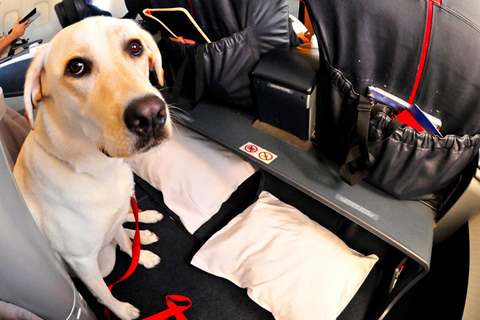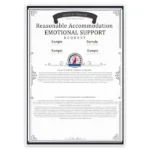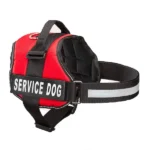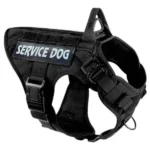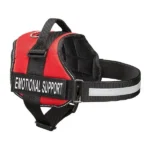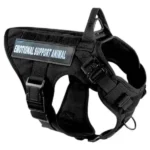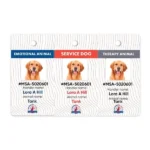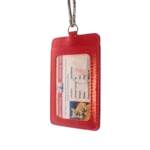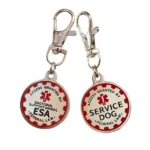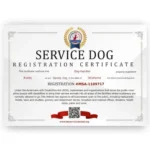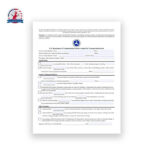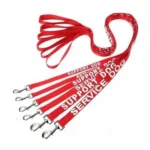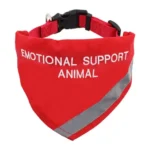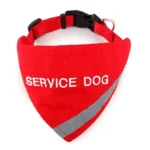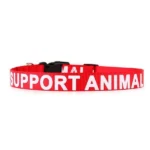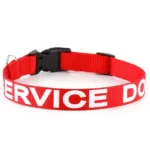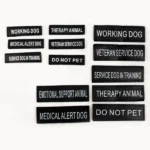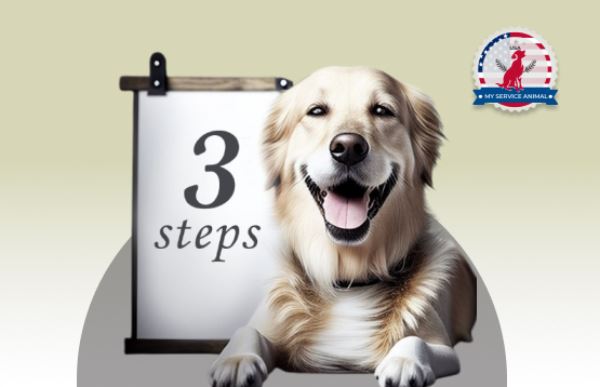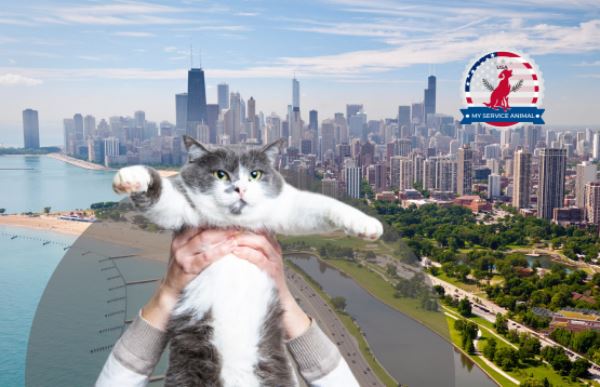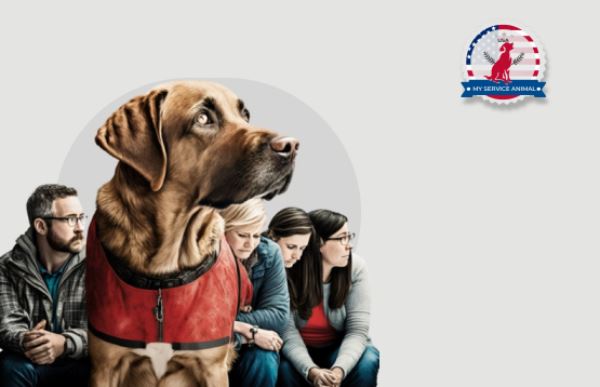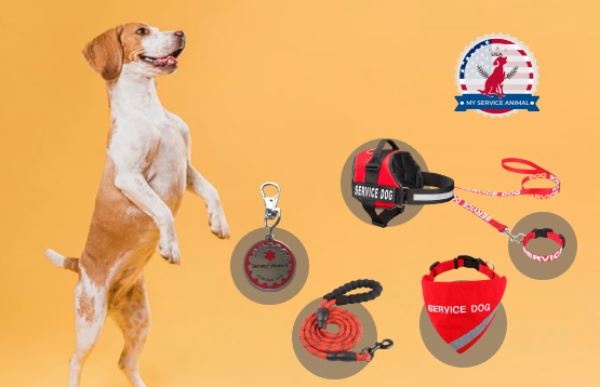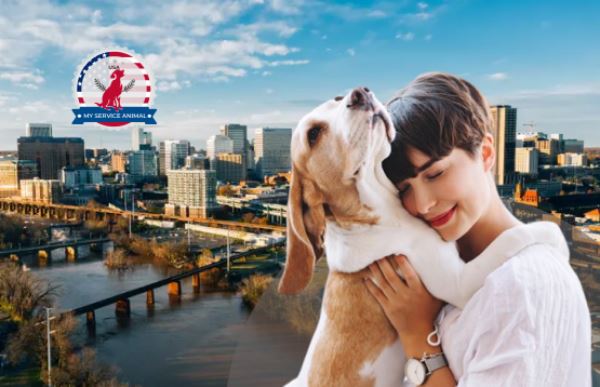A lot of people suffer from aerophobia. Air travel is especially inconvenient for people with disabilities. Therefore, many airlines are now making concessions to their customers and are switching to a pet-friendly form. But still, the question of traveling with your pet confuses some people, because there are many requirements and rules that must be followed.
With service animals, the situation is a bit simpler. In most cases, they are allowed on board the aircraft without hindrance, along with their owners, since for people with disabilities, an animal is a vital measure. However, various changes and innovations are constantly taking place in the legislation, which needs to be monitored. That’s why we’ve put together the information you need to know if you’re planning to travel with a service animal.
Features of flights with ADA animals
The law doesn’t oblige airlines to accept pets in a cabin. Therefore, most airlines make their own decisions about the possibility of transporting pets and emotional support animals in the cabin of a plane. Even pet-friendly airlines reserve the right to refuse to convey an animal in the cabin if the animal behaves aggressively or looks untidy. In addition, air transportation of animals is a separate service and is paid extra.
Pets are usually allowed in the cabin if, together with the carrier, they weigh up to 8 kg. Some airlines allow weight up to 10 kg. However, there are general rules for the size of the container, its strength, as well as the presence of ventilation. In the cabin, pet carriers are placed under the chair in front. According to the rules, the pet must sit in its temporary house for the entire duration of the flight. Sometimes two animals are allowed to be placed in one container.
Animals that together with the container weigh more than 8 kg will have to be checked in as baggage. They can also send a dog of an aggressive breed there, even if it goes into the salon by weight. In addition, in some directions, transporting an animal in the cabin next to other passengers is prohibited by the rules of the airline. If it is fundamentally important for you that the animal flies next to you, you can choose a pet-friendly air carrier.
However, airline pet policies don’t apply to service animals. The directives for conveying service animals are regulated by law, and the air carrier cannot deny you transportation of service animals in the cabin without good reason.
Service animals can fly in the cabin regardless of their size. Such animals need special documents, they must be in an ADA collar and a muzzle. The owner may require a disability document. Emotional support dogs, depending on the rules of the airline, can fly in the cabin or in the luggage compartment. Yet, even with such privileges, a service animal handler must prepare in advance for the flight with his or her four-legged helper.
Air travel with emotional support animals
Until recently emotional support animals had the opportunity to accompany their owners during the flight in a cabin for free. But recent changes in the law made by the Department of Transportation have taken away this privilege from the ESAs.
Therefore, today an emotional support animal can fly in the cabin with the same rights as pets. That is, the conveying of animals in the cabin should be allowed by company policy, and the passenger must pay for the service separately.
The cabin access for service dogs
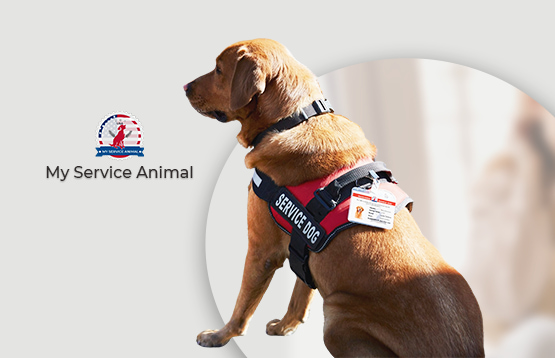
Service animals have significant differences from regular pets. These creatures are specially trained and designed to make life easier for people with disabilities. Their constant presence next to the owner in some cases is simply vital. Therefore, registered service animals are a separate subject of legal relations and have enhanced capabilities.
Trained service animals and their owners have an expanded list of rights and opportunities. They can live with their owner at no extra charge. In addition, service animals of any breed and size are allowed to fly in the cockpit next to a person. Since the flight is considered one of the most stressful situations, the animal here performs several functions at once – both its physical tasks and mental supporting a person and reducing stress levels. This right is enshrined in the legislation and the airline personnel may refuse to transfer a service animal only in rare cases provided by law.
In most cases, only dogs can use the right to fly in the cabin. Requirements for the transportation of service dogs are much lower than for the transportation of pets. Therefore, failures are very rare. Please note that one person can carry no more than two service dogs in the cabin.
Learn more about how to register service animals in our article.
What size dog can fly in a cabin?
There are no clear demands for the size or maximum weight of the dog so that it can travel in the cabin. The basic principle is that the animal should fit in a pet carrier that is placed under the seat in front of you. The approximate maximum weight of the animal can be about 20 pounds. However, the size of the space under the seat may vary depending on the type of aircraft. Therefore, this figure is quite proximate.
What documents are required to fly with a service dog?
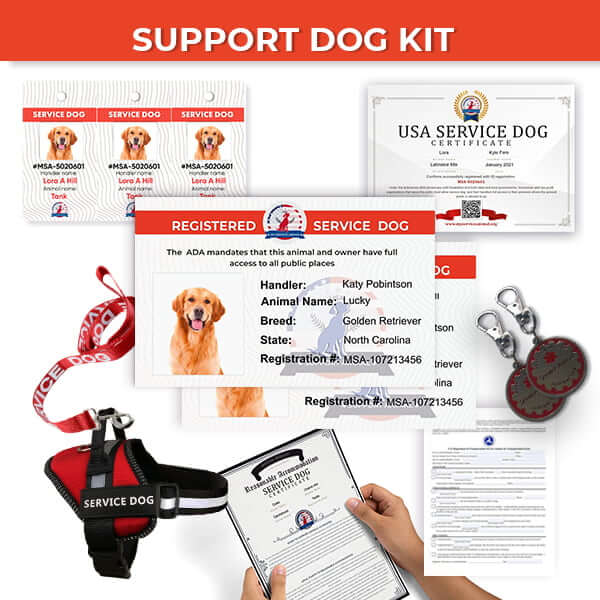
The list of documents required for the conveying of animals is usually easy to find on the airline’s website. The documents for domestic and international flights can differ significantly, so we recommend that you read the list of required papers in advance. Also, make sure that your pet has a health declaration and all the requisite vaccinations required by the American veterinary medical association.
It is important for a service animal that you complete the Department of Transportation form before the flight. You can find this form on the Department’s website and fill it out electronically or order filled DOT form on our website. Questions may require sufficiently detailed answers about your disability, as well as information about the size, weight, and health of the animal. You must also have the animal’s veterinary records showing the dates of the last examination and vaccinations. This paper should also include your veterinarian’s contact details for verification purposes.
For flights lasting more than 8 hours, you need to fill out another form, which will confirm that the animal is able to safely and without harm to its health to endure such long flights.
If you have a letter confirming the status of your service animal from a doctor, and you want to receive additional confirmation of status, you can order a service dog registration in the database with id card confirmation from the MyServiceAnimal register and also buy there all the necessary accessories such as harness and animal tag. To transport a psychiatric service dog, you will need to obtain a PSD letter from your GP. It is important that these documents contain truthful information, which, if necessary, your therapist can reaffirm. You can also check What to Do If Your Therapist Won’t Write You an ESA Letter.
Remember, if you refuse to provide any of the required paperwork, or if you provide a false one, the Department of Transportation and the airline have the right to deny you travel with the service animal. Therefore, take the collection of all the necessary records seriously and prepare them in advance. The full list of required documents can be found on the official website of the Department.
The DOT form for Service Dog
The United States Department of Transportation is a federal agency that regulates the rules for the carriage of passengers within the country and abroad. In particular, it is the DOT that determines and regulates the rules for transporting service animals. Moreover, it is through this service that you need to submit an official request in order to obtain permission to transport an animal in any direction in the cabin.
In the early stages of planning your air travel with a service animal, you will need to fill out and submit a special form to the DOT. This form may seem daunting at first glance, but it’s really all about you and your service animal, so there shouldn’t be any problems filling it out. Please note that without completing this application, you will not be able to request your pet to enter the cabin of the aircraft.
You can obtain this permission by filling out a that form on the Department’s website. Despite the fact that the form is quite large and requires detailed information, it is quite easy to fill out.
You can order a filled Air Department of Transportation (DOT) Service Animal Form with the MyServiceAnimal registrar.
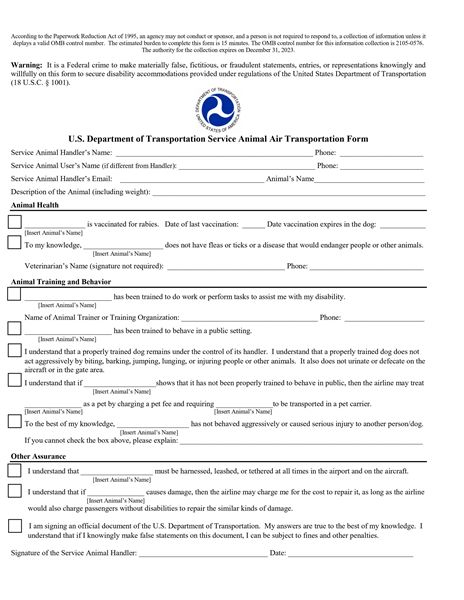
Rules to be observed before, during, and after the flight
First of all, when preparing for air travel with your service dog, you need to learn the laws of the country you are traveling to. Some countries prohibit the importation of certain breeds of animals. Others require the animal to be placed in a two-week quarantine upon arrival. Therefore, you need to clearly understand the requirements of the country where you are flying in order to avoid misunderstandings and unpleasant situations.
After studying the rules of the country, you need to fill out a special form for transporting a service animal. The official form can be found on the website of the United States Department of Transportation. There you need to enter basic information about yourself and your service animal, information about your disability, documents for the animal, and information about its health. Also be prepared for the fact that you will be asked to present a doctor’s report or a Service dog ID card confirming that this is a service animal, and not a pet.
After that, you need to carefully study the rules of the airline you plan to fly. During the flight, the animal must be dressed in special equipment, including a muzzle and ADA vest. Some airlines require all animals, including service ones, to be carried in special carriers. If your flight will last more than 8 hours, take care of the comfort of the animal. You must provide it with everything necessary for the period of the flight.
Once at the destination, there are no special rules for service animals. However, each country has its own policy regarding animal helpers, which you should familiarize yourself with in advance.
The requirements for the animal
All airlines put forward requirements for the state of health of the animal and its behavior. First, the animal must visit the veterinarian regularly and be vaccinated against rabies and parasites. The animal should not have worms, fleas, or ticks, and it should not be a carrier of diseases dangerous to humans. All this information must be supported by the relevant conclusions of the veterinarian. In addition, the list of health requirements includes the appearance of the animal. The air carrier has no right to refuse to transport a service dog to you, arguing its refusal by the size or breed of the animal. However, you may be refused if the animal looks unkempt and dirty. Therefore, we recommend regular visits to the groomer so that the appearance of the animal remains attractive.
With regard to behavior, all service animals undergo special training, which also includes behavior training in public places. When completing the Service Animal Transport Form, you will be asked to identify a trainer or animal training center. However, if you did the training yourself, you can enter your name in this box. The main rule is that the animal should not be aggressive. For example, a dog that barks, growls, or rushes at passers-by will not be allowed to board an aircraft. It is also important that the animal does not seek to harm the property of the airline.
Special ADA equipment and accessories
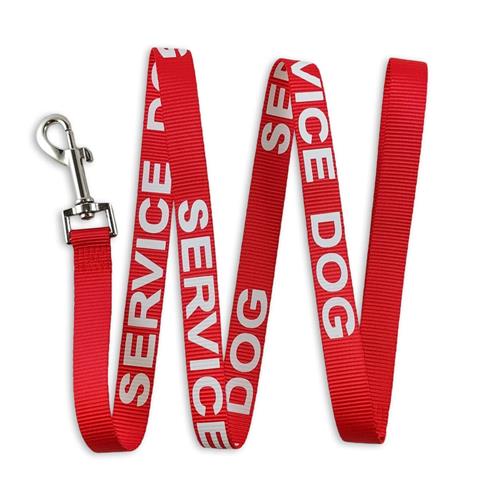
In everyday life, a service animal does not need special equipment, accessories, or clothing. However, these items are essential for the duration of the flight. To make sure that the animal does not harm the property of the airline and to protect and reassure other passengers, the animal must be muzzled and harnessed. In addition, we recommend getting a special vest that will make it clear to others that you are flying not just with your pet, but with a service animal. You can also put a special comfortable pillow and a few toys for your pet.
We also recommend that you pay special attention to the carrier for the animal. The animal should be comfortable in it, it should fit him in size and should not hinder his movements. Any discomfort in an animal during a flight, especially a long one, can cause uncontrolled aggression. It is also important that the carrier is strong enough, has ventilation, and does not leak in case the animal needs to relieve itself.
Postulates for a pet carrier
Pet carriers must fit under the seat in front of you and at the same time be a comfortable size for your pet. A carrier can be either hard-sided or soft-sided. The size of the carrier should be larger than the size of the dog so that the animal has enough free space and feels comfortable. The animal must be able to stand up and turn around.
Pet carriers should have special pet relief areas and not leak. It is best to cover the bottom of a pet carrier with a special absorbent fabric that will make the flight as comfortable as possible for you and your dog.
It is important that one pet carrier is for one animal only. This means that you cannot use a large kennel for a few small puppies, as this violates air traffic rules.
Requisitions to the ADA animal’s health
Consult an animal health professional to ensure your dog is flight-ready. Most species of dogs like boxers and bumblers are prohibited from traveling on many airline routes because their breathing is difficult.
During your travels, the aforementioned airline group says the health certificate must be issued at least 7 to 10 days ahead of your departure. In addition to veterinary medicine and the breeding process, keep an eye out for possible restrictions or regulations.
All animals traveling by air, whether in the cabin or in the baggage compartment, must be healthy and vaccinated. The animal vaccination certificate must be signed by a licensed veterinarian. Vaccinations should be given in advance, at least 30 days before the date of travel.
All stages of the flight with a dog on the plane
The dog must behave calmly during the flight, not show aggression, not bark, and not growl at other passengers. Service dogs are more obedient and behave better because they undergo specific preparation.
If you have an ordinary pet or an emotional support animal you have to exercise with it so that the animal respects you and obeys you. If the temperament of the animal is very mobile and playful, consult a veterinarian about the use of sedatives that will not harm the dog.
The dog must stay in the carrier throughout the flight. The animal is not allowed to walk on the plane, take up seats, or the emergency exit row. Also, you can not feed the animal from the table, so the dog must eat in its kennel.
-
Reservations
Book non-stop flights whenever possible. This differs from the direct flight, where stops may occur. Some airlines require minimum travel times for pets. Also, it’s not recommended for animals to travel in cabins during holidays due to a large number of people.
-
Check-in
On the day of the flight, it is better to arrive at the airport in advance to be able to resolve all issues on the spot. Check out at the ticket counter if the animal is flying in a cabin. During the check-in, you also have to pay pet fees if it’s needed.
If the animal flies as checked baggage or is transported as cargo, take care of the animal first. Passenger and cargo terminals are usually located in different areas of an airport. So, make sure you deliver the animal to the right place and your dog will get to the destination with you.
-
Security screening
When dogs have been transported inside a vehicle, they are carried by truck to the conveyor belt and through the scanner while you lead or carry your dog to a metal detector. It is advisable to have pre-check membership to avoid hassles, as the program provides you with quicker lines and eliminates the need to remove your boots or a light jacket.
Keep in mind that the pet policy differs significantly from airline to airline, which makes checking directly with the carrier a good option. It is possible for you and your dog or other animals to have an enjoyable and comfortable flight.
-
Caring for an animal during long flights
As flights can frighten not only people but also animals, it is important that the pet owner closely monitors the condition of his or her pet during the flight. In stressful situations, the animal may need more care and attention. Try to calm your dog down using its favorite treats.
If the flight lasts more than 8 hours, you must be sure that the animal will be able to tolerate it normally, so first consult a veterinarian. Also, take care of food and water for your dog. In addition, an animal has to feel free to relieve itself whenever it’s needed.
The stress during dogs flying in a cabin?
Air travel can be stressful not only for humans but also for animals. This is one of the reasons why not all airlines allow animals to be carried in the cabin next to other passengers. In a stressful situation, the animal’s behavior can be unpredictable and aggressive. Therefore, if you still decide to transport your pet to the cabin, take care of his comfort and tranquility.
You can put your pet’s favorite toys in the pet carrier. Also, do not forget about food, but you can not feed the animal from the table on the plane. Another important factor is the ability of the animal to be relieved.
Arranging things for your pet
Animal scientists usually don’t mind using sedating agents. So to soothe your pet, you can use special medications in consultation with your veterinarian. Also, prepare water and pet food in advance for the flight. However, we do not recommend feeding the animal immediately before the flight, as a full stomach can cause irritation to your pet.
The average domestic flight time could take a couple of hours or a half of a day, and a flight to the southwestern United States might take the whole day to get there. If you transport an animal in a baggage compartment a pet carrier may tape food bags around your pet’s nest to allow workers to feed it during this time. You can also attach a photo of the animal to the carrier, just in case the animal is easier to find if it escapes.
Service dog-friendly airlines
Airlines are becoming more and more pet friendly because every day more pets travel with their owners on board. Airlines have had to adapt to market demands as the demand for flying with pets grows every year. Pets no longer have to go through a long separation from their owner. However, when planning a joint trip, you need to carefully consider the choice of airline so that the flight goes easily and smoothly.
Detailed rules and requirements for traveling with a pet may differ for each airline. However, there are general guidelines. Only obedient, well-mannered, and clean animals are allowed on board the aircraft. If your pet is aggressive or looks untidy or sickly, you may be denied transportation of such an animal. Also, do not forget about special equipment. First of all, it is necessary for the flight to be as comfortable as possible for you and your pet, as well as for other passengers.
Most airlines that still permit pets to be transported in a cabin have lists of animal requirements, ranging from species, age, and size, to suitable carriers and other equipment. You can usually read the airline’s pet policy on the website, as well as learn about all the necessary documentation, equipment, and other requisitions that must be met when conveying an animal in the cabin.
Which airlines can dogs fly in a cabin?
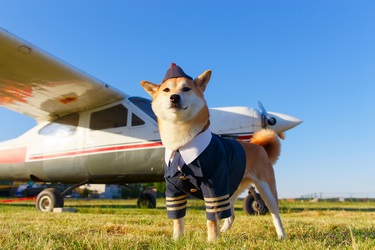
Among the most popular American carriers that provide their clients the opportunity to travel with their pets as a carry-on are United Airlines, Alaska Airlines, and American Airlines. Much depends on the size of the animal. Smaller animals do have the opportunity to travel in a cabin, while larger animals generally fly in the baggage compartment.
Most of the conditions for transporting pets in the cabin at these airlines are the same. The animal must meet the established requisitions, have a veterinary passport, and be placed in special carriers under the seat in front of you. However, some details may differ. For example, some airlines consider a pet carrier as a separate item of baggage, while others add it to a carry-on. Please find Delta airline’s ADA pet policy here.
Using the services of United Airlines
United Airlines is one of the largest airlines in the United States and the world. In addition, it is one of the air carriers that allows you to transport pets in the cabin. The airline personnel will allow you to carry cats and dogs if the animal is small and its carrier can fit under the seat in front of you.
The animal carrier is a separate item of baggage in addition to a carry-on bag. There is an additional charge for conveying a pet in the cabin, and when booking tickets a place for the pet is booked separately.
If we talk about the transportation of service animals, United Airlines is completely guided by the laws established by the DOT. To be eligible for a flight with a service animal, you must complete a Service animal training and behavior attestation form on the Department’s website. And for flights lasting more than 8 hours, the carrier also requires a Relief form for the animal.
Be aware of the prices
Prices for air travel for pets are not twopenny. You must book your dog in advance. Yet, animal transport services are normally paid for at the airport, not when booking tickets. Also, if you have a long layover, be prepared that you will have to pay twice for the animal carriage.
You can also transfer the animal as cargo. In this case, the price of transportation will be determined based on the combined weight of the animal, as well as the distance over which you want to deliver it.
In addition, it is important to remember that service animals can accompany their owners to the cabin free of charge. Therefore, if the airline requires you to pay pet fees for the conveying of the service animal, it violates your rights.
What about international flights?
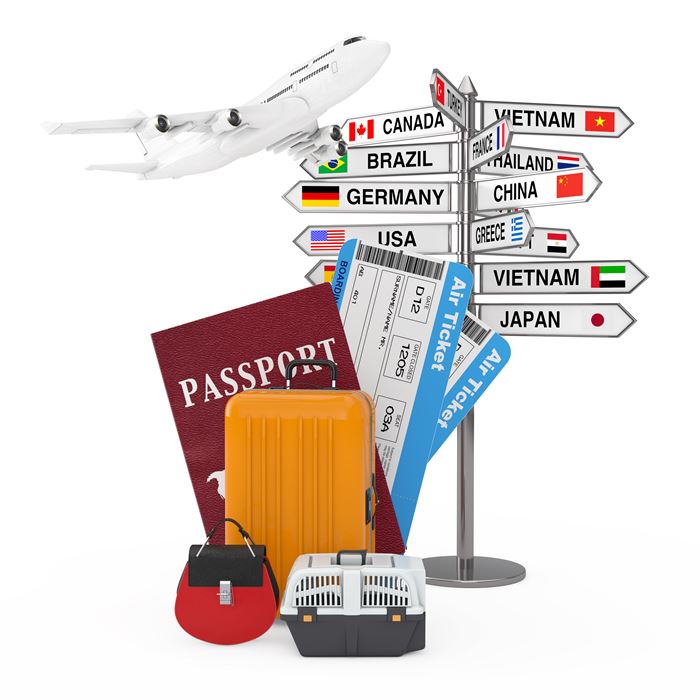
The organization of an international flight with an animal is more complex and requires longer preparation. Some airlines do not allow animals on international flights at all, so we recommend starting with the rules of the carrier. If animals are allowed they need a medical international passport.
During international flights, you must follow not only the rules set by the carriers but also the regulations set by the International air transport association, as well as know the laws of the country you are traveling to.
In some countries, the import of animals is prohibited, while in other countries, imported animals must be quarantined for some time. The easiest way to quickly find out the regulations of your country of destination is to contact the appropriate embassy at least a month before your planned trip.
How to protect your pet rights
Start preparing for an air trip with an animal in advance. So you will have more time to get acquainted with the laws and regulations of animal transportation, as well as gather all the requisite documentation, purchase equipment and prepare the animal.
If you are sure that your pet meets all the requirements, but you have been refused to convey the animal in the cabin, you can file a formal complaint with the company. If the airline staff forbids the service animal to fly in the cabin, the owner of the animal has the right to file a complaint to the DOT, as such actions of the air carrier may be considered discrimination.
Reasons for refusal
The DOT allows airlines to refuse to carry service animals only if they behave aggressively and may pose a threat to other passengers on the flight. Remember that there are no legal breed restrictions, so the airline staff can not prohibit the transportation of the animal, arguing it with the animal breed.
Another possible reason for refusal is the insufficient minimum age of the animal. You have to remember that for domestic flights, dogs and cats must be at least 8 weeks old. For international flights, the minimum age of the animal is 4 months, because at this age dogs and cats receive the last dose of the required minimum of vaccinations.
For a service animal, the minimum age for air transfer is also four months, because at this age the animal already knows the basic commands and rules of behavior and obedience.
Most airlines allow you to transport pets only if there is free space. In addition, there are some aircraft restrictions that differ for each carrier.
